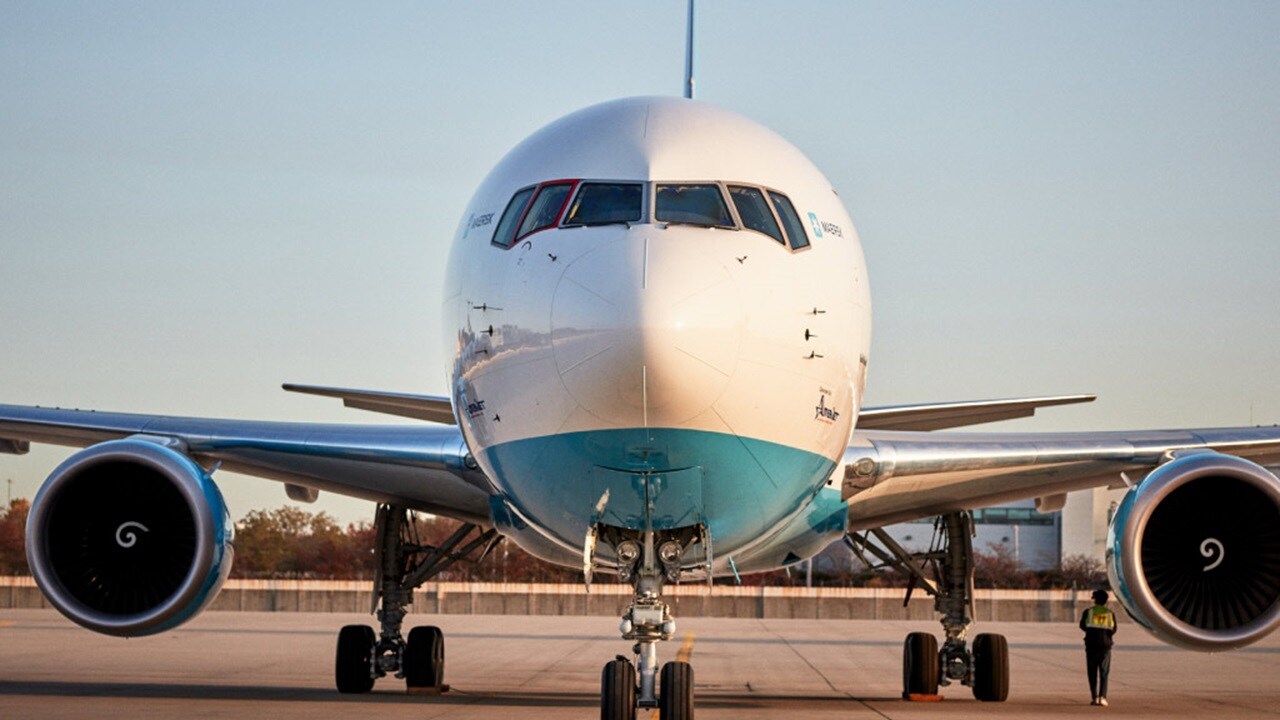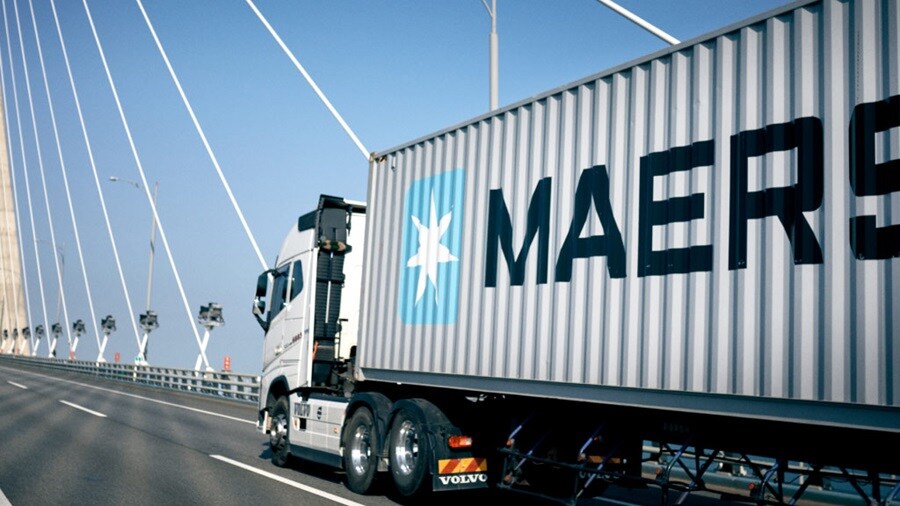As we reach the halfway point of 2025, Asia Pacific’s logistics environment continues to evolve, shaped by cautious trade optimism, regional supply chain realignments, and tighter regulatory oversight. Demand across ocean and air remains steady, though operational complexity is growing due to capacity adjustments, customs compliance changes, and inland infrastructure constraints in some high-volume corridors. At Maersk, we are focused on providing customers with dependable, end-to-end logistics support to navigate this landscape, anchored in reliable service delivery and proactive engagement across key transport modes. This month’s update offers the latest developments across ocean, air, inland, and customs, alongside the actions Maersk is taking to help customers adapt with agility and confidence.
Download the flyer in Chinese language:
Ocean Market Update
Transpacific Demand Rebounds While Intra-Asia Trade Stays Resilient

Following the 90-day tariff reprieve between the U.S. and China announced in mid-May, Maersk has seen a sharp recovery in Transpacific bookings. This follows a temporary slowdown in April, when volumes from China to the U.S. dropped by up to 40%. Many customers are now using this window to front-load shipments, potentially bringing forward the peak season.
Other trades remain stable. Intra-Asia trade continues to grow, driven by rising consumption and expanding middle-class demand across Southeast Asia. Singapore remains a strategic transshipment hub, with increasing demand for bonded warehousing and sea-air logistics solutions.
The volatility of trade right now is creating uncertainty for our customers, with our integrated solutions, Maersk is well-positioned to give customers the flexibility they need to manage the challenges in their supply chain.
In response to the demand rebound, Maersk is restoring capacity on the Transpacific trade, reintroducing larger vessels and launching extra sailings. Earlier downsizing decisions helped preserve network continuity, and our modular East-West network continues to allow agile redeployment of vessels without disrupting service reliability. In Singapore, we are expanding our logistics footprint with the upcoming World Gateway 2 facility, which will double our warehousing capacity and enhance our ability to support flexible transshipment and inventory solutions in the region.
Customers shipping to the U.S. from China should book early to secure space during this accelerated demand cycle. For those operating in Southeast Asia, Maersk offers integrated support—from bonded warehousing to sea-air routing—to help manage inventory and maintain flexibility.
Market demand is likely to remain elevated through Q2, though the second half of the year remains uncertain. Maersk will continue to monitor policy shifts and adjust its network to maintain service stability. For support with bookings or scenario planning, please contact your local Maersk team.
Air Freight Market Update
Air Cargo Demand Holds Firm as Tight Capacity and Policy Changes Shape Flows

Asia Pacific’s air freight market remained strong through May, supported by steady demand and rising capacity. Global air cargo volumes rose 4.3% year-on-year in March, with Asia Pacific continuing to lead growth. Capacity expanded by 7% in April, and load factors increased, particularly across Asia–Europe and transpacific routes.
Despite cautious global economic sentiment, underscored by softening export orders and a modest 2.3% GDP growth forecast, the air freight sector is holding its momentum. Stable rates and broad space availability are aiding customer planning, although recent U.S. tariff adjustments have introduced new complexity. Some trades are tightening as shippers reassess flows in response to customs changes.
Maersk is scaling capacity to meet demand and working closely with partners to manage uplift on high-demand lanes. We are also supporting customers affected by regulatory changes, particularly into North America, with tailored guidance on routing, customs planning, and space prioritisation.
Looking ahead, we expect the market demand to remain firm into early Q3, though further policy shifts may impact planning. Maersk will continue to monitor developments and adjust our air solutions accordingly. For support, contact your local Maersk air freight representative.
Inland Market Update
Stable Inland Operations Face Pressure in High-Demand Corridors

Inland logistics services across Asia Pacific remain stable overall, though certain corridors continue to experience strain due to urban congestion and surges in cargo volume. In Greater China, road, rail, and barge services are operating smoothly, providing consistent inland connectivity for both exports and imports. However, demand spikes in areas such as southern Vietnam and eastern India are testing infrastructure capacity and increasing dwell times at inland terminals.
Cross-border trucking in Southeast Asia has shown improvement, driven by streamlined border processes and improved cooperation among customs authorities.
Meanwhile, rail connectivity from China into Central Asia continues to grow, offering manufacturers and shippers a reliable alternative for select commodities that benefit from faster transit than ocean but lower cost than air freight.
Maersk is working closely with regional transport partners and port authorities to minimise inland handover delays, improve transit visibility, and support cargo flow continuity. The introduction of Maersk Arc in Greater China has enhanced container tracking capabilities for inland truck movements, enabling proactive alerting and more informed logistics decisions. For customers shipping through inland hubs with high seasonal demand, we recommend early document submission and advanced forecasting to maintain flow predictability. Our local inland teams remain fully available to support with route planning, coordination, and exception management.

Customs Market Update
Tariff Realignments Prompt Strategic Customs Planning
Recent U.S. trade actions have introduced a revised tariff structure affecting imports from China, Hong Kong SAR, and Macau SAR, effective 14 May 2025. While Section 301 and 232 tariffs remain, new IEEPA-based duties and a reduced 54% rate on low-value imports add complexity. These shifts—alongside new U.S.-U.K. trade provisions—are reshaping landed cost structures and customs risk profiles for Asia Pacific businesses trading with the U.S. and Europe.
In this increasingly dynamic environment, compliance accuracy and sourcing agility are critical.
The evolving tariff landscape presents both cost exposure and opportunities for duty optimisation, making proactive customs management a priority for regional exporters and importers.
Maersk is guiding customers through this transition with a structured “Assess–Comply–Optimise” approach. Our Global Trade and Customs Consultants are mapping supply chain exposure, validating HTS codes and origin declarations, and identifying optimisation levers such as tariff engineering, alternative sourcing, and duty drawback strategies.
We’re also supporting scenario planning and real-time tariff tracking to help customers distinguish between policy speculation and confirmed regulatory changes—ensuring faster, data-driven responses to trade uncertainty.
These updates offer an opportunity for customers to recalibrate sourcing strategies and reduce customs liabilities—if guided by accurate classification, valuation, and compliance practices. We encourage all businesses trading with the U.S. or U.K. to review landed cost models, update documentation, and evaluate where strategic adjustments can improve cost efficiency and resilience.
Maersk’s advisory teams are available to support with tailored customs reviews, risk mitigation strategies, and supply chain optimisation aligned to the latest regulatory environment.
While some tariffs are fixed, others remain under negotiation—making scenario-based planning essential. Maersk will continue to monitor developments and provide timely updates through our trade advisory channels. For support in building a resilient, compliant customs strategy, please contact your local Maersk customs representative.
Major Ports Update
| Trade | Less than 1 day | 1-3 days | More than 3 days |
|---|---|---|---|
|
Trade
Asia Ports
|
Less than 1 day
Busan, Dalian, Xingang, Qingdao, Ningbo, Xiamen, Shekou, Yantian, Nansha, Hong Kong, Tanjung Pelepas, Jakarta, Brisbane, Auckland, Melbourne
|
1-3 days
Shanghai, Ho Chi Minh, Port Klang, Singapore, Tauranga, Sydney
|
More than 3 days
|
|
Trade
Rest of World
|
Less than 1 day
Bremerhaven, Rotterdam, Valencia, Jebel Ali, Colombo, Dar es Salaam, Apapa, Onne, Tema, Lome, Abidjan, Conakry, Durban, Zanzibar, Pointe Noire, Cape Town, Oakland, Los Angeles, Prince Rupert, Vancouver, Tacoma, Houston, Norfolk, Baltimore, Charleston, Miami, Newark, Balboa, Lazaro Cardenas
|
1-3 days
Rijeka, Koper, Port Louis, Reunion, Djibouti, Maputo, Savannah
|
More than 3 days
|
Remark: Information is dynamic and subject to change.
Resources and tools to support you
Visit our “Insights” pages where we explore the latest trends in supply chain digitization, sustainability, growth, resilience, and integrated logistics.
Learn what’s happening in our regions by reading our Maersk Europe, North America, and Latin America updates.
Do you find this market update useful? If you haven’t subscribed to Maersk Asia Pacific Monthly Update yet, click the link below and stay posted!
Subscribe to Asia Pacific Monthly Updates
We value your business and welcome your feedback. Should you have any questions on optimizing your cargo flows, please contact your local Maersk professional.
Anything you need, we’re here to help
I agree to receive logistics related news and marketing updates by email, phone, messaging services (e.g. WhatsApp) and other digital platforms, including but not limited to social media (e.g., LinkedIn) from A. P. Moller-Maersk and its affiliated companies (see latest company overview). I understand that I can opt out of such Maersk communications at any time by clicking the unsubscribe link. To see how we use your personal data, please read our Privacy Notification.
By completing this form, you confirm that you agree to the use of your personal data by Maersk as described in our Privacy Notification.


